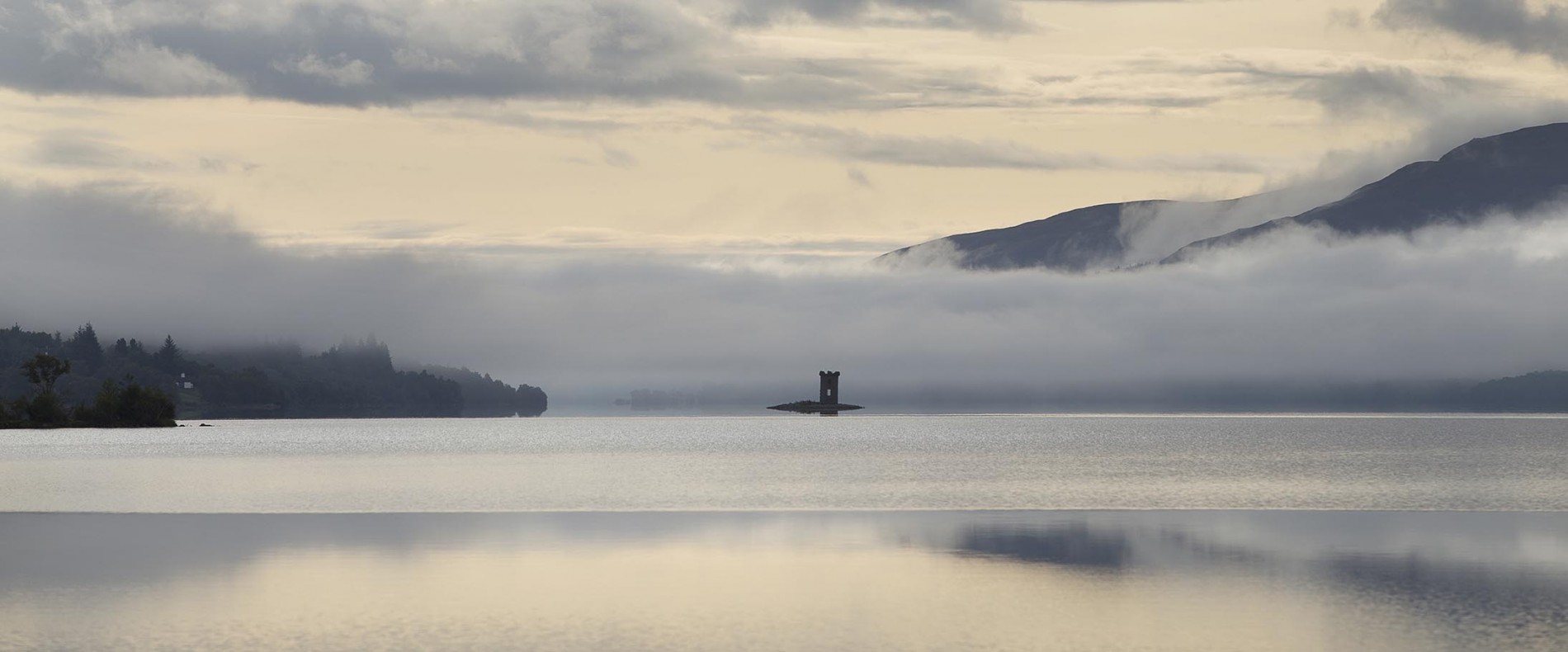

South west of Moulinvaddie (OS NN708606) shows a hut circle and old field system, and a nearyby burial cairn (OS NN708614) has been dated at 2400 BC.
Bunrannoch (OS NN663578) and (OS NN666579) just east of the loch was also an area that attracted settlers, with its fertile land, again showing burial mounds (Seoma na Stainge OS NN674583). Some parts of the settlement were later 'modernised', with at least one longhouse being built on an earlier Bronze Age hut circle, some material possibly being recycled! These later homesteads have been dated at around 1250 AD, with cereals being grown and livestock kept, and a modest metal working industry shown from bloomery workings.
Two hill forts are known; Dun Ailein overlooks Bunrannoch guarding the eastern approaches and may have been associated with that early settlement. Guarding the Rannoch approaches from the north west is Dun Daimh, likewise a very craggy, easily defensible, peak with a strategic position to spot enemy using the Loch Ericht passes. Neither of these now show any visible remains. Rannoch Moor acts as a natural barrier from the south west.
Loch Rannoch is home to at least two known crannogs (ancient lake dwellings), only one, Eilean nam Faoileag (OS NN531577), now being visible above the surface. Some go back 5000 years, but this has been dated at about 1110 AD.
Used variously as a clan refuge, centre of warfare and even for imprisonment, it is now simply ‘the island of the gulls’. The tower built on it is a 19th century folly.
On Loch Tay there is a reconstruction of a crannog lake dwelling which is well worth a visit. It is close to the village of Kenmore. (Sadly this was destroyed by fire in 2021 but the museum is open and still fascinating - Crannog to be rebuilt nearby)
Archaeological investigations at Bunrannoch unearthed a hoard of bronze axes in the 1990s. Earlier, somewhere between 1820 and 1830, a bronze armlet was found. This form of Iron Age jewellery is distinctly Scottish, made for the aristocracy in the first and second centuries AD, and symbolic of power and prestige. Unwound, the whole length of the armlet is 80.6cms, and it weighs 510gms. These artefacts are all now in collections held by the National Museum of Scotland.
Clach na Iobairte, Craiganour (OS NN 617589), is perhaps the most eminent of these. Also known as the Hatchet Stone or Stone of Sacrifice, it had the reputation of associations with Druids, but almost certainly was not erected by them. It does, however, stand on top of a burial mound, but this, it is thought, is because it was moved at a later date. Many cup-marked stones are to be found, but only one ring-marked, at Tullochcroisk (OS NN713580). They are all some of the unsolved mysteries of prehistory.
Rannoch has a fascinating geological history, details of which can be found on Geology of Rannoch